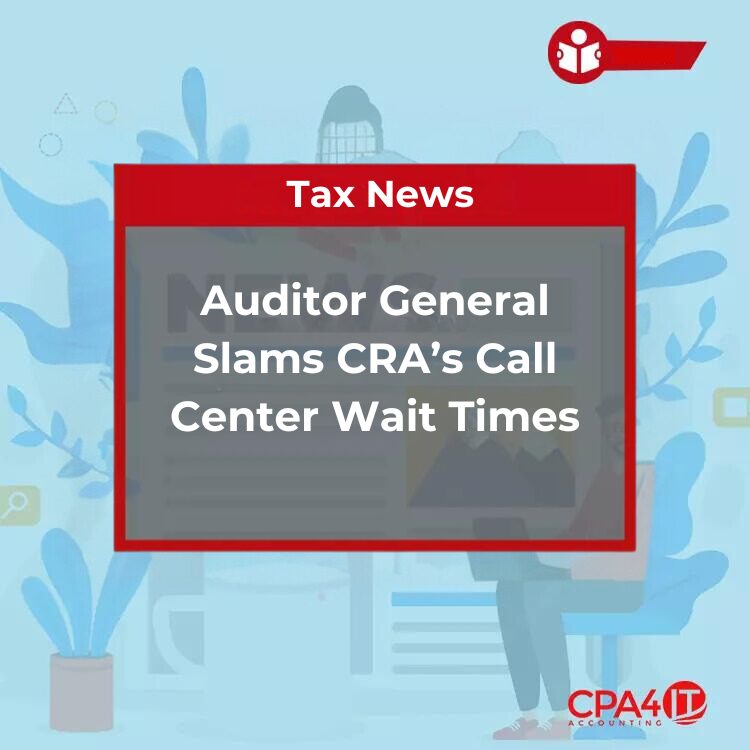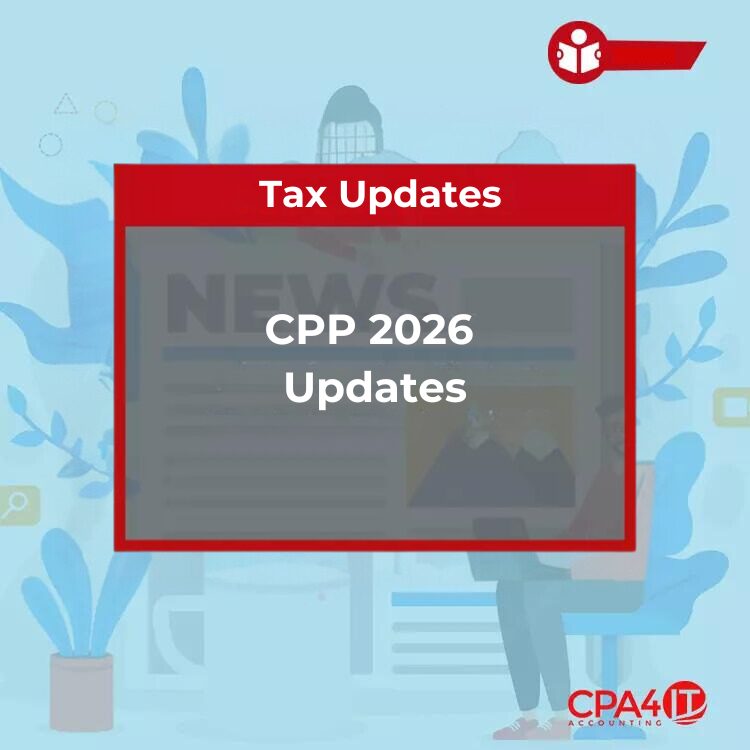This blog will discuss everything new for the 2025 Personal Tax Season. It is understandable that tax payers have many questions on new tax rules, changes in CRA e‑filing processes, and capital gains regulations. We will walk you through everything you need to know for a smooth filing experience this year.
T4 E-Filing Challenges in 2024
One significant change that impacted tax preparation this season was the complete revamp of the Canada Revenue Agency (CRA) T4 e‑file process. These adjustments caused multiple issues on CRA’s side. In some cases, even if you received an e‑file confirmation number, CRA’s portal did not reflect the T4 or T5 as filed. Consequently, if your T4 or T5 is missing in the CRA system, do not assume it was never filed. We have e‑file confirmations for everyone who requested them. However, many slips still do not appear on the CRA website.
Because of these complications, it is possible that filing deadlines and processes have become more confusing. Currently, there is no general extension granted to all taxpayers for personal taxes. However, as we will detail later, certain taxpayers with specific capital gains scenarios do receive an extension. The complications related to T4 and T5 uploads have simply delayed or complicated the availability of slips for many people.
Key 2024 Personal Tax Changes
1. Alternative Minimum Tax (AMT) Adjustments
The Alternative Minimum Tax serves as a secondary calculation method to ensure high-income earners pay at least a minimum level of tax, particularly when they rely on significant deductions, credits, capital gains, or dividends. For 2024, the AMT rate has increased from 15% to 20.5%, and the basic exemption threshold rose from $40,000 to $173,000. This is intended to reduce exposure for lower-income earners while still ensuring high-income individuals pay a fair share.
2. Canada Child Benefit (CCB) Extension
Previously, CCB payments ceased immediately if a child passed away. Starting in July 2024, parents will continue receiving the CCB for six months after the death of their child. This provides additional financial support during a difficult period.
3. Home Buyers Plan (HBP) Withdrawal Increase
The HBP allows first-time home buyers to withdraw funds from an RRSP without immediate taxation. The limit increased from $35,000 to $60,000 per individual, meaning a couple could withdraw up to $120,000 combined. This measure, effective April 16, 2024, is designed to help with housing affordability. Additionally, if you withdrew money from your RRSP for an HBP between January 1, 2022, and December 31, 2025, your repayment period may now start in the fifth year after withdrawal instead of the second.
4. Enhanced Canada Pension Plan (CPP) Contributions
For self‑employed individuals, the first tier of CPP requires paying both the employee and employer portions, totaling 11.9% on earnings up to an annual limit. The enhanced tier, labeled “CPP 2,” applies to earnings between $68,500 and $73,200, adding an 8% contribution for self‑employed individuals on that additional bracket. Although this means paying more now, it can lead to higher CPP benefits upon retirement.
5. Capital Gains Inclusion Rate Fiasco
Initially, the government planned to increase the capital gains inclusion rate for certain taxpayers starting June 25, 2024. Under that plan, individuals would have 50% taxability on the first $250,000 of capital gains and 66.67% beyond $250,000; corporations and trusts would face 66.67% on all gains with no threshold. However, in January 2025, the effective date for higher rates was pushed to January 1, 2026. Because slips were already being issued under the old timeline, many T3s, T4PAs, and T5008s needed reissuing. This caused more delays and confusion.
6. Non-Compliant Short-Term Rental Expenses
If you own a short-term rental (e.g., Airbnb, Vrbo) that is not in compliance with local or provincial regulations—meaning you lack proper permits or are banned from operating in your area—your expenses related to that property are no longer deductible. As of January 1, 2024, mortgage interest, utilities, property tax, and other expenses cannot be claimed if your rental is deemed non‑compliant.
7. New Reporting Rules for Digital Platforms
Platform operators like Airbnb, Uber, Etsy, and Amazon are now required to report user transactions to the CRA. Starting January 1, 2024, these online platforms must provide the CRA with details including the seller’s name, address, and Social Insurance Number. This means you should accurately report any income from these platforms to avoid discrepancies and potential audits. Although the initial deadline for platforms to submit data is January 31, 2025, they have until July 31, 2025, to finalize transmissions.
8. Extended Deadline for Charitable Donations
Due to mail disruptions in late 2024, donations made through February 28, 2025 can be claimed on your 2024 tax return. However, this is currently a one-time extension. Claiming donations from January and February 2025 on your 2024 return may complicate your filings next year, so double‑check your records to avoid duplication.
9. Adjusted Tax Brackets and Basic Exemption
Tax brackets shift every year to account for inflation. The basic personal amount for 2024 is $15,705, meaning you pay no federal tax on income up to this amount. For 2025, this will rise to $16,129. If your income bracket changes slightly, you may pay less tax overall.
Filing Requirements and Deadlines
- Canadian Personal Tax Deadline: April 30 remains the main filing and payment deadline unless you qualify for a targeted extension related to capital dispositions.
- U.S. Personal Tax Deadline: April 15 for U.S. citizens. Remember that U.S. citizens file based on citizenship, not residency.
- Sole Proprietors: The filing deadline is June 15, but any tax owing must still be paid by April 30. The same timing applies to GST/HST payments.
- Capital Gains Extension: If certain T slips are delayed due to capital gains issues, CRA will grant penalty and interest relief until June 2, 2025. This is not a blanket extension; it primarily applies to those with capital dispositions reported on problematic T slips.
- Early Filing Myth: Some confusion arose about an April 2 deadline. This only relates to receiving the carbon tax rebate on April 22. Filing later simply means you will receive the rebate after CRA assesses your return, not that you lose it.
Preparing and Organizing Your Return
- Collect Your Documents: Gather T4s, T5s, receipts for self-employment or rental income, and any other supporting paperwork.
- Check for Slip Delays: Given CRA’s T4 e‑filing issues, some forms might arrive late. Stay vigilant.
- Fill Out Our Personal Tax Tools: We provide worksheets for real estate rental income, home office expenses, self‑employment, and more. Our personal tax checklist highlights deductible items, including tuition, medical expenses, and the disability tax credit.
- Keep Supporting Documentation: CRA may audit. Hold on to receipts, especially for medical bills or donations, and note whether you were reimbursed by an insurer.
- File Electronically: Use direct deposit for quicker refunds, and ensure your CRA My Account is active.
- Plan for Payment: If you owe, pay by April 30 to avoid interest. If your cash flow is tight, consider discussing a payment arrangement with CRA.
When to Expect Your Refund
For most returns, CRA issues Notices of Assessment (NOA) within two weeks of e‑filing. That said, new filers or complex returns can take up to eight weeks. If you qualify for the Express NOA service, you may see an initial assessment even sooner. Keep in mind that if you owe taxes for previous years or have instalment requirements, refunds could be offset or adjusted accordingly.
Looking Ahead to 2025
- Capital Gains: The new, higher inclusion rate is now slated for January 1, 2026. Stay tuned for potential further changes or rollbacks.
- Remote Workers and Provincial Tax: CRA intends to change rules on withholding for remote employees, basing provincial tax on the employer’s location rather than the employee’s. This could mean less provincial tax withheld at source, leaving you with a higher lump‑sum payment at filing time.
- Estate Planning: Many of our clients have asked about legacy transfers and real estate. We plan to cover estate planning more thoroughly in upcoming sessions.
We Can Help!
At CPA4IT, our Personal Tax Preparation service is designed to simplify the tax filing process and maximize your savings. We use our secure and efficient client portal to gather and file your documents quickly while ensuring accuracy at every step. Drawing on our decades of experience and deep understanding of the income tax act, we work diligently to uncover every potential credit or deduction available to you. Make sure to book a FREE consultation with our experts and learn how we can help you organize finances, create wealth, and transform wealth into a legacy.



